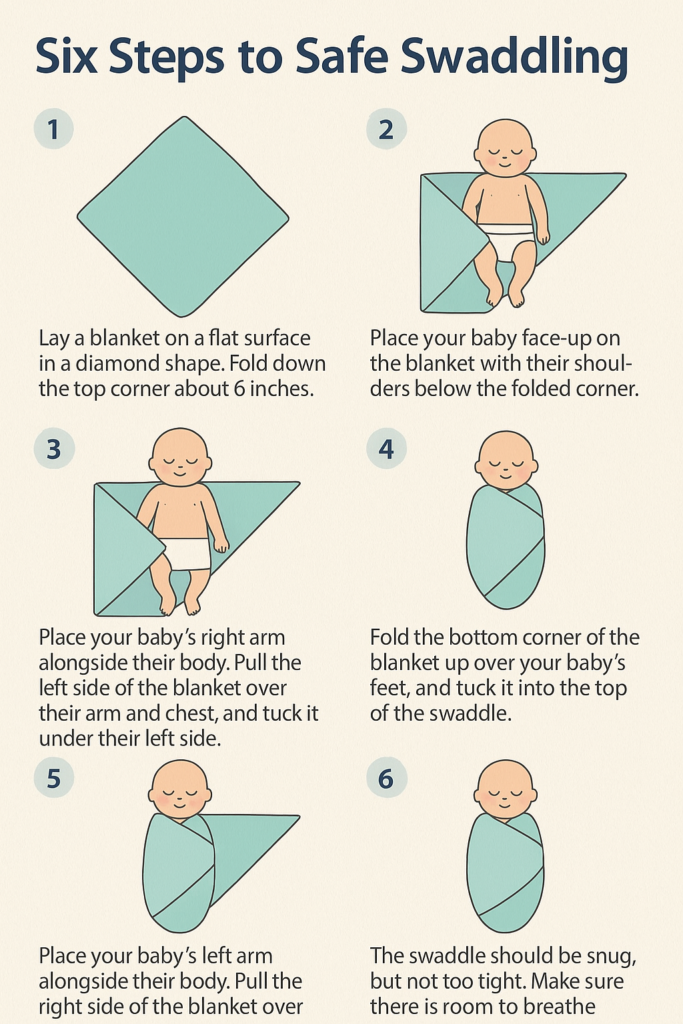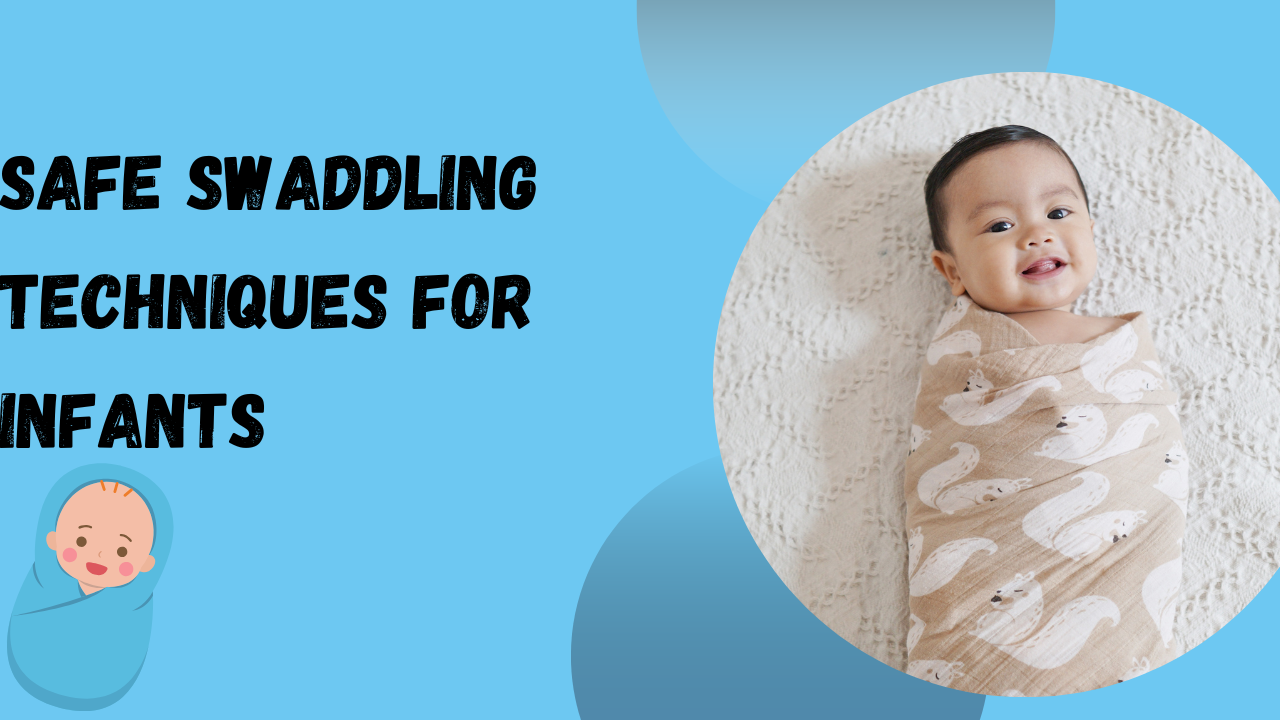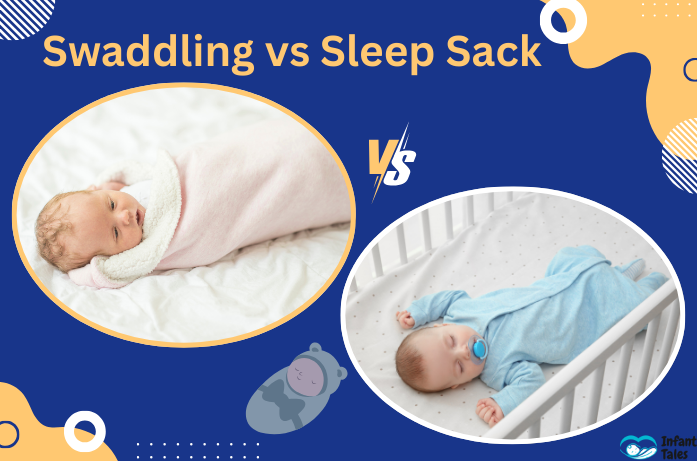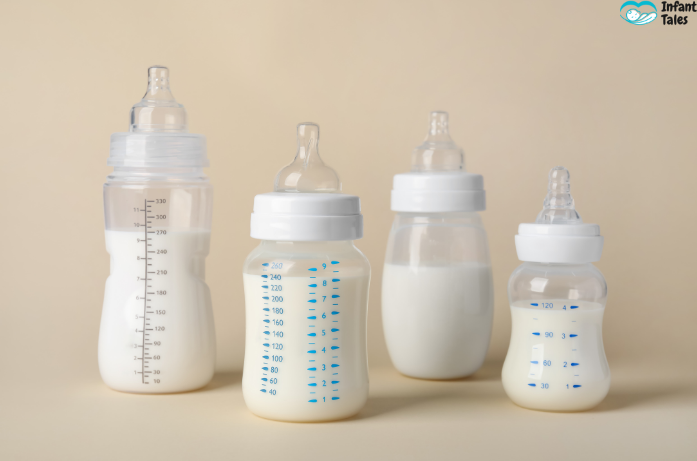Swaddling is a time-honored practice that can help soothe newborns and promote better sleep by mimicking the snug environment of the womb. However, it’s crucial to swaddle correctly to ensure your baby’s safety and comfort.
Benefits of Swaddling
- Reduces the startle reflex, helping babies sleep more soundly.
- Can soothe colicky or fussy infants.
- May reduce the risk of Sudden Infant Death Syndrome (SIDS) when done correctly.
Step-by-Step Guide to Safe Swaddling
- Prepare the Blanket: Lay a thin, breathable blanket on a flat surface in a diamond shape. Fold the top corner down about 6 inches.
- Position Your Baby: Place your baby face-up on the blanket with their shoulders just below the fold.
- Secure One Arm: Gently place your baby’s right arm alongside their body. Pull the left side of the blanket over their arm and chest, tucking it under their left side.
- Fold the Bottom: Fold the bottom corner of the blanket up over your baby’s feet, tucking it into the top of the swaddle.
- Secure the Other Arm: Place your baby’s left arm alongside their body. Pull the right side of the blanket over their arm and chest, tucking it under their right side.
Important Tips:
- Ensure the swaddle is snug but not too tight; you should be able to fit two fingers between the blanket and your baby’s chest.
- Allow room for the hips and legs to move to prevent hip dysplasia. The legs should be able to bend up and out at the hips.
- Always place your baby on their back to sleep.
- Stop swaddling once your baby shows signs of rolling over, typically around 2 months of age.
Visual Guide
Refer to the following visual guide for a step-by-step illustration:

Debunking Common Swaddling Myths
Swaddling is a widely practiced technique, but it’s also surrounded by several myths that can confuse new parents. Let’s clear up some of the most common misconceptions:
- Myth 1: Swaddling always helps babies sleep longer
Truth: While swaddling can help some babies sleep more soundly, it’s not a guaranteed solution. Each baby is different, and some may resist swaddling or prefer other soothing methods. Pay attention to your baby’s cues and adapt accordingly. - Myth 2: Tightly swaddling the legs keeps babies calm
Truth: Swaddling tightly around the legs can increase the risk of hip dysplasia. Always allow room for the legs to move freely in a natural, frog-like position. Refer to this guide from the International Hip Dysplasia Institute for more details. - Myth 3: Swaddling is safe for all ages
Truth: Swaddling is not recommended once your baby begins to roll over, which typically occurs around 2 months. After that point, it can pose a suffocation hazard if the baby rolls onto their stomach. - Myth 4: Babies must be swaddled for every nap and nighttime sleep
Truth: Swaddling is just one of many soothing strategies. It’s perfectly fine to let your baby sleep without a swaddle if they sleep well and safely without it.
Understanding what’s fact and what’s fiction can help parents make informed, safe decisions for their little ones.
Authoritative Resources
- UC Davis Children’s Hospital: How to Safely Swaddle a Baby
- International Hip Dysplasia Institute: Hip-Healthy Swaddling
For more detailed information and personalized guidance, consult your pediatrician or a certified child care specialist.



